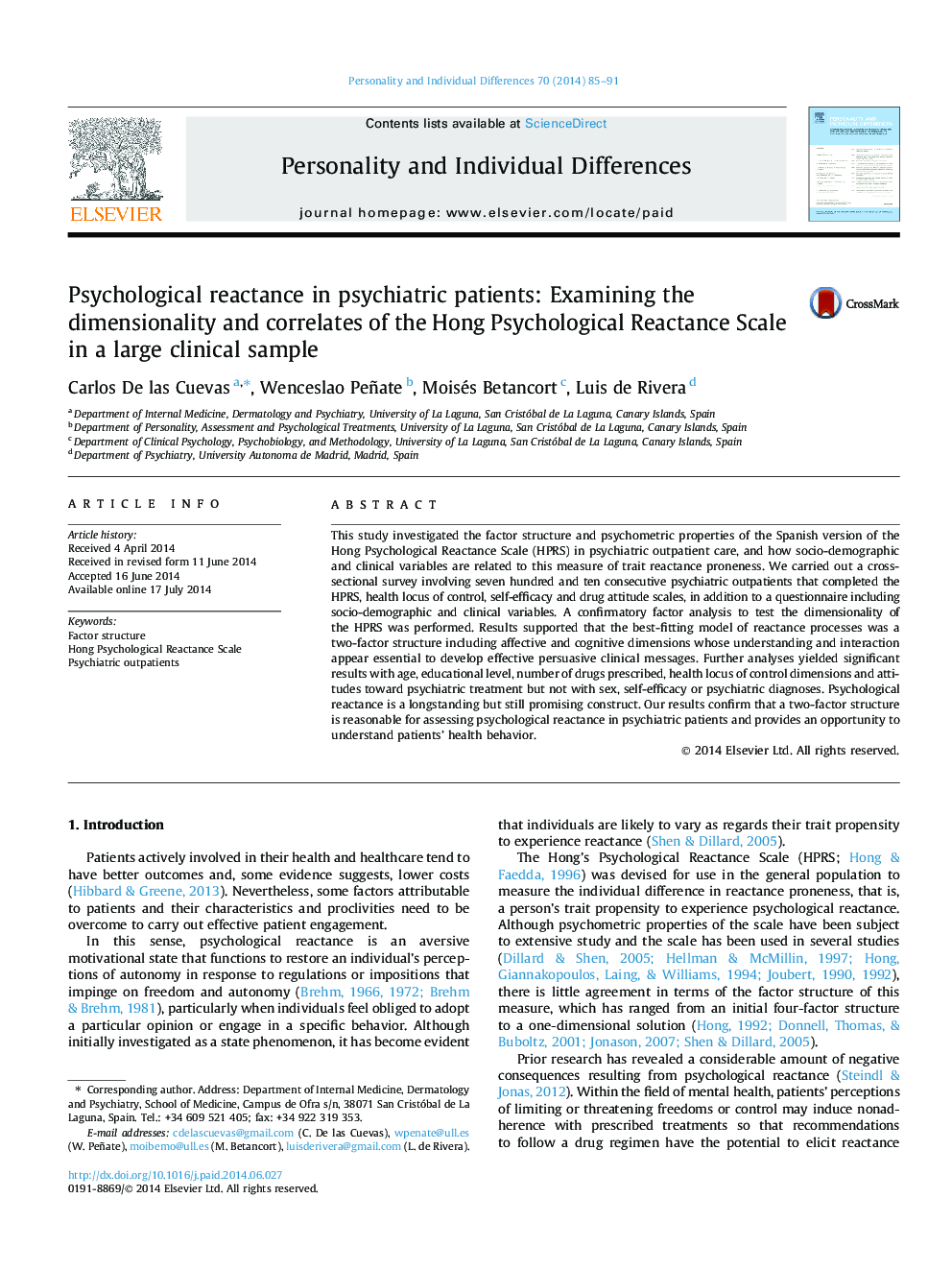| Article ID | Journal | Published Year | Pages | File Type |
|---|---|---|---|---|
| 890319 | Personality and Individual Differences | 2014 | 7 Pages |
•Psychological reactance provides an opportunity to understand patients’ health behavior.•We examine the factor structure of the HPRS in psychiatric outpatients.•Best-fitting model was a two-factor one including affective and cognitive dimensions.•Health locus of control and self-efficacy influences are reported.•Psychiatric diagnoses showed no significant differences.
This study investigated the factor structure and psychometric properties of the Spanish version of the Hong Psychological Reactance Scale (HPRS) in psychiatric outpatient care, and how socio-demographic and clinical variables are related to this measure of trait reactance proneness. We carried out a cross-sectional survey involving seven hundred and ten consecutive psychiatric outpatients that completed the HPRS, health locus of control, self-efficacy and drug attitude scales, in addition to a questionnaire including socio-demographic and clinical variables. A confirmatory factor analysis to test the dimensionality of the HPRS was performed. Results supported that the best-fitting model of reactance processes was a two-factor structure including affective and cognitive dimensions whose understanding and interaction appear essential to develop effective persuasive clinical messages. Further analyses yielded significant results with age, educational level, number of drugs prescribed, health locus of control dimensions and attitudes toward psychiatric treatment but not with sex, self-efficacy or psychiatric diagnoses. Psychological reactance is a longstanding but still promising construct. Our results confirm that a two-factor structure is reasonable for assessing psychological reactance in psychiatric patients and provides an opportunity to understand patients’ health behavior.
